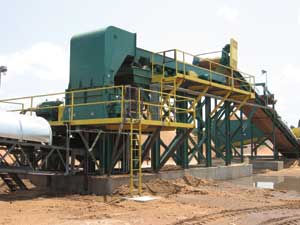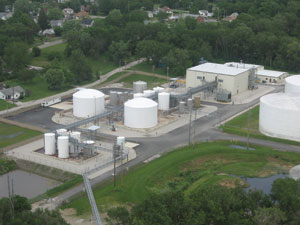February 2009
 View Full Print Edition
View Full Print EditionBusiness Briefs
Columns

EPM reflects industry in many ways
By Mike Bryan

Ethanol and the Green Team
By Bob Dinneen
Start-ups occur despite wintery conditions
By Bryan Sims

Making a Mountain of Biomass Out of a Snowbank
By Rona Johnson

Hoping for the Best of Times
By Tim Portz
letter to the editor
By Nancy Young

Miners for a Fuel of Gold in San Francisco
By Joe Jobe

Marketing Biodiesel on Fuel Attributes, Not Feedstocks
By Nile Ramsbottom
Featured

Storage Strategies for Cellulosic Feedstocks
By Anna Austin
EPM explores storage options for corn stover and switchgrass, both of which have the potential to serve as the next big feedstocks for cellulosic ethanol production.

Incentivizing Biofuels Sustainability
By Jessica Ebert
Scientists weigh in on sustainable biofuels production including how to best manage cropping systems and establish an incentive program that awards environmentally responsible biofuels development.
Clear Communication Can Lift Employee Morale
By Robyn Heinz
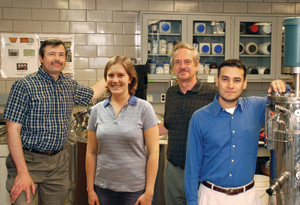
Fertile Fungus
By Susanne Retka Schill
Iowa State University researchers use fungi to treat thin stillage and create some interesting new coproducts.

It's not just a Pipe Dream
By Erin Voegele
Kinder Morgan proved that it's possible to overcome the challenges of moving ethanol via pipeline when the company shipped its first commercial batch in November. Bolstered by industry support, consumer interest and favorable legislation, other pipeline companies are also tackling ethanol pipeline projects.

Delving into the Intermediate Blends Report
By Ron Kotrba
Two of the seven authors of U.S. DOE's recent initial report on the effect of midlevel blends on legacy vehicles and small engines discuss the results of the study and future work.
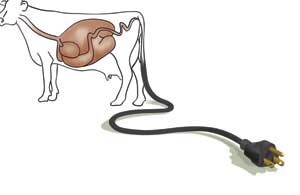
From Digestion to Distribution
By Ryan C. Christiansen
Power companies in dairy regions have known for years that there is a distributed source of energy underfoot: cow manure. Using anaerobic digestion, manure can be converted into biogas and combusted in a generator to produce electricity. However, anaerobic digesters aren't cheap. It takes collaborative funding and diligent project management to bring multiple anaerobic digesters on line within a power district-and that's just the beginning.

A ‘Torrefic' Energy Solution
By Anna Austin
Similar to cellulosic ethanol, there have been challenges to overcome in developing and advancing torrefaction. Now on the brink of commercialization, the thermochemical treatment process has the potential to serve as a substantial upgrade for coal and biomass combustion, co-combustion and gasification applications.

Closing the Wood Pellet Gap
By Ron Kotrba
In Europe, wood pellets are used as fuel for utility, commercial and residential applications to produce electricity and heat, but in the U.S. pellets have largely been relegated to the residential markets. Effective policy drivers and a different mindset exist in Europe, while in the U.S. it's hard to compete with cheap coal.
Anaerobic Options
By Barnett Koven
The use of anaerobic digesters on a small scale could provide localized energy sources while reducing the negative effects of greenhouse gases.
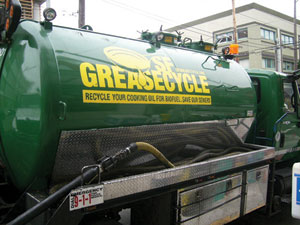
Biodiesel in the Golden Gate City
By Erin Voegele
San Francisco has taken the lead when it comes to creating a communitywide, multifaceted biodiesel initiative. The city serves as an example of what is possible when leaders and community-based grassroots organizations work together to better their community.

Entrée into the Majors
By Ron Kotrba
Biodiesel Magazine talks with major U.S. biodiesel marketer Renewable Energy Group and midstream energy giant Kinder Morgan, about the preparedness of the nation's infrastructure to meet the forthcoming U.S. biodiesel mandate.
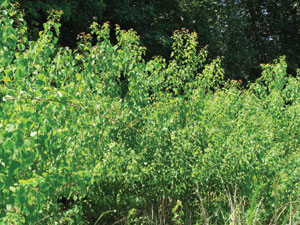
Franklin's Gift
By Susanne Retka Schill
The Chinese tallow tree may rival algae as a promising new biodiesel feedstock, if yield reports of 1,000 gallons of oil per acre are true. Its invasive tendency, however, has raised red flags.

Growing Beyond Oil: The 2008 Canadian Renewable Fuels Summit
By Khalila Hammond Photos By Brigitte Bouvier
This year's fifth annual Canadian Renewable Fuels Summit was packed full of interesting speakers, new ideas and predictions for the biofuels sector. Industry leaders gathered from around the country to discuss policy, marketing and the need to look beyond the traditional notions of our fuel needs in an effort to 'grow beyond oil.'
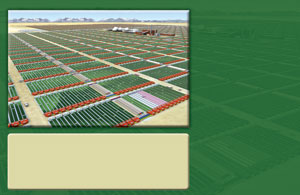
Permitted Ponds-Siting Hurdles for Algae Development
By Jerry Kram
Algae developers are riding a wave of interest due to the single-celled plant's ability to grow rapidly and produce valuable products that can be used to make biodiesel. How industrial algae plants will be configured is yet unknown, but producers will face the same problems as other alternative energy producers-where to put the facility and how to get government permission to build it.
Meal: More Than Just Chicken Feed
By Susanne Retka Schill
As new alternative oilseeds are considered for biodiesel production, a big consideration is whether there will be a viable market for the meal.
Contributions
Project Finance: Lender Perspectives and Development Trends
By Thomas M. Minnich
While economies around the world slow and credit options dwindle, the biomass-to energy industries keep churning forward. Capital exists for those looking to develop projects.


















